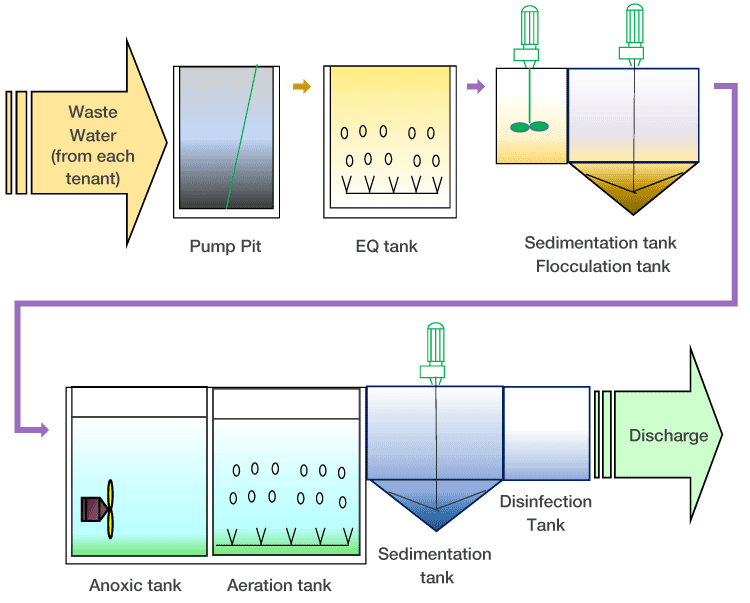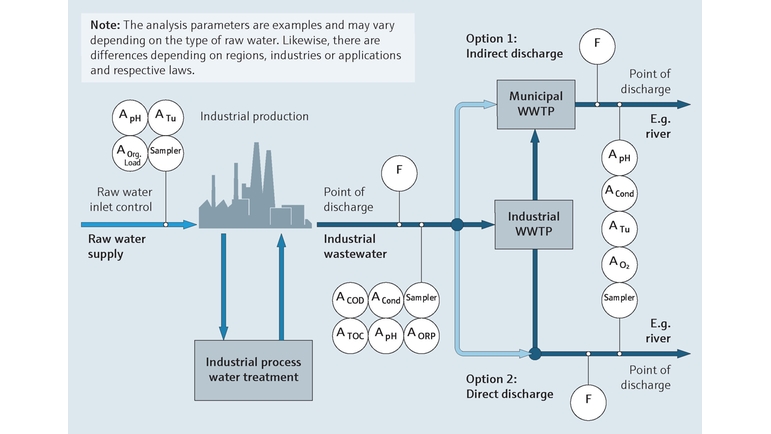Challenges and Solutions in Industrial Waste Water Treatment
The treatment of commercial wastewater provides a complex array of obstacles, varying from rigorous governing compliance to the complexities of cost monitoring and technical restrictions. The variability in waste composition further makes complex the efficiency of conventional treatment approaches, usually resulting in risen functional expenditures.
Regulatory Conformity Difficulties
How can commercial centers browse the facility landscape of regulative compliance in wastewater therapy? The regulatory structure regulating wastewater monitoring is multifaceted, usually differing by jurisdiction and sort of market. Facilities must comply with federal, state, and local guidelines that dictate effluent top quality requirements, discharge restrictions, and tracking needs. Failing to comply can cause severe charges, consisting of fines and functional closures.
To properly manage these compliance obstacles, facilities ought to apply robust tracking and reporting systems that make certain real-time data collection and analysis. Normal audits and threat evaluations can identify potential conformity voids, permitting proactive modifications in therapy procedures. Employee training programs concentrating on regulative understanding and ideal practices are necessary to promote a culture of conformity within the company.
Furthermore, involving with regulatory firms can offer beneficial insights and make clear ambiguous guidelines. Facilities may likewise gain from speaking with ecological specialists who concentrate on wastewater treatment compliance, making certain that they stay abreast of progressing regulations. By embracing these approaches, industrial facilities can not just fulfill compliance needs but likewise boost their functional efficiency and environmental stewardship.
Expense and Economic Obstacles
Browsing governing compliance in wastewater treatment commonly offers significant economic difficulties for commercial centers. The prices related to executing required therapy modern technologies, maintaining conformity with rigid laws, and managing operational expenses can be discouraging. Numerous organizations deal with high preliminary funding expenses for the building or updating of wastewater therapy plants, which might stress budget plans, particularly for medium-sized and tiny enterprises.
Furthermore, ongoing functional prices, consisting of chemical, upkeep, and labor inputs, contribute to the monetary problem. The changability of changing energy prices and the prospective requirement for extra investments to meet evolving regulations exacerbate these financial pressures. In most cases, the lack of financial motivations or assistance from government bodies makes it much more challenging for businesses to warrant financial investments in sophisticated treatment systems.
In addition, the economic viability of wastewater treatment solutions is often examined, especially for industries with limited revenue margins. Therefore, it is vital for industrial centers to check out cost-effective approaches, such as embracing innovative funding alternatives, taking part in partnerships, and leveraging arising technologies that can aid alleviate these financial barriers while making sure compliance with ecological standards.

Technological Limitations
Numerous technical restrictions impede the effectiveness of commercial wastewater therapy processes. One substantial difficulty is the inadequacy of existing therapy modern technologies to attend to complicated contaminants. Many traditional techniques, such as turned on sludge and chemical rainfall, deal with the removal of arising pollutants, including drugs and microplastics. This constraint usually leads to the discharge of inadequately dealt with water, which can have harmful environmental influences.
Furthermore, the scalability of therapy innovations poses a difficulty. While some advanced techniques, like membrane layer filtration or sophisticated oxidation, reveal guarantee in regulated environments, their application on a bigger scale can be practically challenging and excessively pricey. Maintenance and operational intricacies better complicate the adoption of these systems, specifically for smaller markets with minimal technical know-how.
The assimilation of real-time monitoring innovations likewise remains inadequate in several therapy facilities. Without effective tracking systems, operators can not appropriately assess treatment effectiveness or identify potential failures, bring about inconsistent effluent quality. Dealing with these technological limitations via study and growth, along with financial investment in ingenious services, is important for enhancing the efficacy of industrial wastewater treatment and guaranteeing regulatory conformity.
Irregularity in Waste Structure
In the realm of commercial wastewater therapy, the variability in waste structure presents an awesome difficulty. Industries produce wastewater with diverse features, affected by elements such as manufacturing processes, resources, and functional methods. This heterogeneity makes complex the treatment procedure, as traditional systems usually battle to successfully deal with the vast array of contaminants existing.
As an example, wastewater from food processing might have high levels that site of natural great post to read matter, while effluents from chemical production might include harmful substances and hefty steels. This variance requires versatile treatment techniques to guarantee conformity with environmental laws and protect public wellness. Additionally, changes in waste composition can happen in time, affected by adjustments in production timetables, upkeep activities, or the intro of brand-new products.

Ingenious Treatment Solutions
Ingenious treatment remedies are necessary for dealing with the intricacies of commercial wastewater management. Typical techniques typically drop short in successfully eliminating a large range of contaminants, specifically in facilities with diverse effluent streams. Current advancements focus on integrating sophisticated innovations to enhance treatment performance and sustainability.
One promising method is using innovative oxidation procedures (AOPs), which utilize powerful oxidants to deteriorate natural toxins. AOPs, consisting of photocatalysis and ozonation, can considerably minimize poisonous substances and enhance effluent high quality. In addition, membrane layer bioreactor (MBR) technology has acquired traction, integrating organic therapy with membrane layer filtration, go now resulting in high-grade effluent and minimized impact.
Another innovative service is the application of resource healing systems. Methods like anaerobic digestion not only treat wastewater but additionally produce biogas, which can be harnessed as a renewable resource source. The fostering of man-made intelligence and machine learning versions can enhance treatment processes by forecasting variations in wastewater composition, thereby boosting operational efficiency.
These cutting-edge options not only address regulatory conformity yet additionally promote ecological sustainability, leading the method for a more resistant and effective commercial ecological community.
Final Thought
In final thought, resolving the challenges of commercial wastewater treatment calls for a complex approach that integrates regulative conformity, price monitoring, and technological advancements. A commitment to constant enhancement in therapy approaches will ultimately contribute to the efficient administration of commercial wastewater and environmental protection.
The treatment of industrial wastewater presents a multifaceted range of difficulties, ranging from strict regulatory compliance to the intricacies of expense management and technological limitations. Industrial Waste Water Treatment.Navigating governing conformity in wastewater therapy typically provides considerable monetary challenges for industrial centers. Resolving these technical restrictions with research study and development, alongside investment in innovative remedies, is critical for boosting the efficiency of industrial wastewater treatment and ensuring regulative compliance
Wastewater therapy centers need to invest in robust monitoring systems and adaptable therapy technologies capable of accommodating differing influent qualities.In conclusion, resolving the difficulties of industrial wastewater therapy requires a complex method that integrates regulatory conformity, cost monitoring, and technical advancements.
Comments on “Industrial Waste Water Treatment-- Cutting-Edge Technologies for Water Filtration”